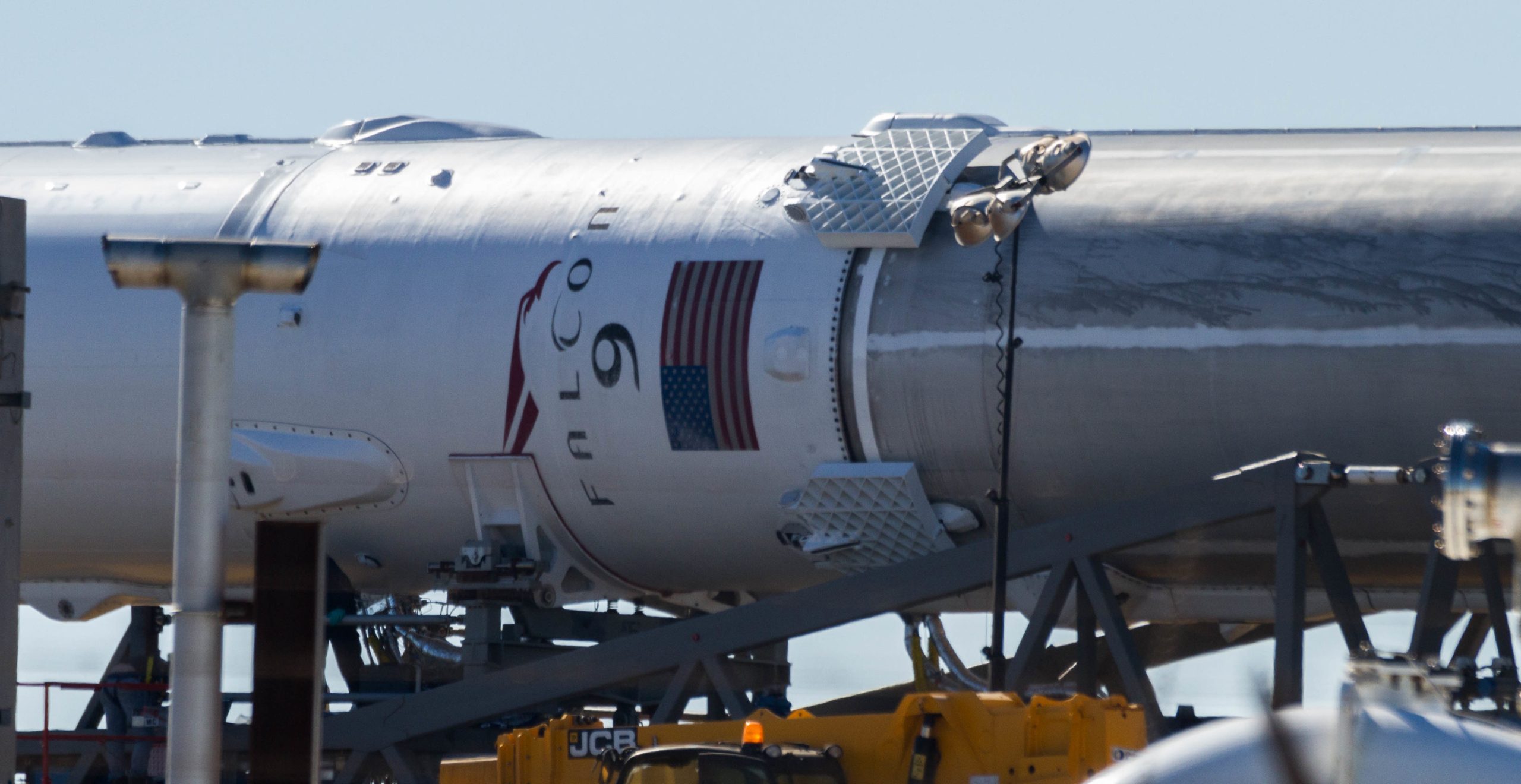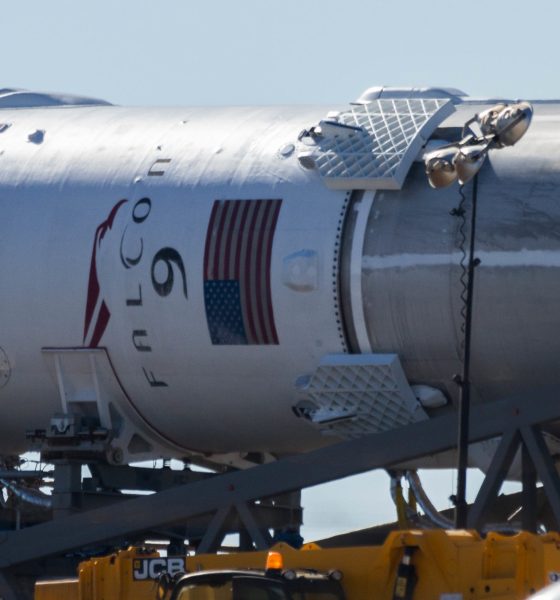

News
SpaceX aims for a burst of December launches despite recent delays
Originally scheduled to launch on December 4, SpaceX’s thirteenth resupply mission to the International Space Station (ISS) has been pushed back to no earlier than Friday, December 15 after routine preflight checks identified potential contaminants in the Falcon 9 launch vehicle’s upper stage fuel lines.
The past six weeks have been something of an outlier in an otherwise relentless series of 2017 launches for SpaceX. In early November, defects in payload fairings were discovered at the company’s Hawthorne, CA factory and quickly traced to the Zuma mission’s fairing, at that point already vertical and prepared to launch from Kennedy Space Center. SpaceX chose to pause its launch indefinitely as it investigated the fairings already delivered to its several launch pads and began the process of either repairing or replacing those impacted. The CRS-13 Cargo Dragon mission soon took precedent as Zuma remained on hold.

A panorama of SpaceX’s newly-reactivated Launch Complex 40. Falcon 9 and Dragon can be seen in the center. (Tom Cross/Teslarati)
Although CRS-13 does not require a payload fairing and was thus unaffected by SpaceX’s ongoing investigation, the mission was scheduled to be launched from Launch Complex-40, essentially a new pad after ten months of extensive repairs and upgrades. This translated into a few days of additional delays as the SpaceX launch crew thoroughly tested the pad’s new systems and pushed towards static fire of the flight proven Falcon 9 booster, successfully completed on December 6 after an additional handful of days of pad-related delays. This pushed the launch date from the 4th to the 8th, then the 12th and the 13th to accommodate further limited testing in order to ensure pad readiness. However, routine tests revealed a possible fuel line contamination in Falcon 9’s second stage, and SpaceX delayed the mission an additional 48 hours to resolve the problem. CRS-13 is now aiming for launch no earlier than 7:35am/10:35am PST/EST on December 15, but the window is instantaneous and any additional delays would push the launch into late December, at which point Cape Canaveral Air Force Station returns to operational status with the conclusion of winter holidays.
Although LC-40 suffered through its own teething period of bugs and testing while returning to life, there is a certain irony in the fact that a bug in the only wholly new component of CRS-13’s Falcon 9 rocket has been the most recent cause of delay; both the Falcon 9 booster and Cargo Dragon capsule are refurbished, flight-proven hardware, although both the trunk and heat shield of the Dragon were likely replaced with new components. There is something to be said about the logical nature of truly “flight-proven” hardware being more trustworthy than completely new alternatives, but it is far more likely that the upper stage contamination can be largely traced back to the new pad hardware.

A refurbished Dragon perched upon its flight-proven Falcon 9 first stage, separated by the uncooperative second stage. (Tom Cross/Teslarati)
Although Teslarati’s launch photographer Tom Cross has been battered about by Zuma and CRS-13 delays, SpaceX has demonstrated an admirable level of patience and caution, risking significant delays to their launch manifest in order to best ensure the safety and reliability of their launch services. While delays are painful in the spaceflight fan business, they are impermanent and secondary to safety and success. SpaceX will undoubtedly return to their regular programming in no time at all, with the West-coast launch of Iridium-4 and first pad rollout of Falcon Heavy up next on the docket. Stay tuned!

News
Tesla FSD fleet is nearing 7 billion total miles, including 2.5 billion city miles
As can be seen on Tesla’s official FSD webpage, vehicles equipped with the system have now navigated over 6.99 billion miles.

Tesla’s Full Self-Driving (Supervised) fleet is closing in on almost 7 billion total miles driven, as per data posted by the company on its official FSD webpage.
These figures hint at the massive scale of data fueling Tesla’s rapid FSD improvements, which have been quite notable as of late.
FSD mileage milestones
As can be seen on Tesla’s official FSD webpage, vehicles equipped with the system have now navigated over 6.99 billion miles. Tesla owner and avid FSD tester Whole Mars Catalog also shared a screenshot indicating that from the nearly 7 billion miles traveled by the FSD fleet, more than 2.5 billion miles were driven inside cities.
City miles are particularly valuable for complex urban scenarios like unprotected turns, pedestrian interactions, and traffic lights. This is also the difference-maker for FSD, as only complex solutions, such as Waymo’s self-driving taxis, operate similarly on inner-city streets. And even then, incidents such as the San Francisco blackouts have proven challenging for sensor-rich vehicles like Waymos.
Tesla’s data edge
Tesla has a number of advantages in the autonomous vehicle sector, one of which is the size of its fleet and the number of vehicles training FSD on real-world roads. Tesla’s nearly 7 billion FSD miles then allow the company to roll out updates that make its vehicles behave like they are being driven by experienced drivers, even if they are operating on their own.
So notable are Tesla’s improvements to FSD that NVIDIA Director of Robotics Jim Fan, after experiencing FSD v14, noted that the system is the first AI that passes what he described as a “Physical Turing Test.”
“Despite knowing exactly how robot learning works, I still find it magical watching the steering wheel turn by itself. First it feels surreal, next it becomes routine. Then, like the smartphone, taking it away actively hurts. This is how humanity gets rewired and glued to god-like technologies,” Fan wrote in a post on X.
News
Tesla starts showing how FSD will change lives in Europe
Local officials tested the system on narrow country roads and were impressed by FSD’s smooth, human-like driving, with some calling the service a game-changer for everyday life in areas that are far from urban centers.

Tesla has launched Europe’s first public shuttle service using Full Self-Driving (Supervised) in the rural Eifelkreis Bitburg-Prüm region of Germany, demonstrating how the technology can restore independence and mobility for people who struggle with limited transport options.
Local officials tested the system on narrow country roads and were impressed by FSD’s smooth, human-like driving, with some calling the service a game-changer for everyday life in areas that are far from urban centers.
Officials see real impact on rural residents
Arzfeld Mayor Johannes Kuhl and District Administrator Andreas Kruppert personally tested the Tesla shuttle service. This allowed them to see just how well FSD navigated winding lanes and rural roads confidently. Kruppert said, “Autonomous driving sounds like science fiction to many, but we simply see here that it works totally well in rural regions too.” Kuhl, for his part, also noted that FSD “feels like a very experienced driver.”
The pilot complements the area’s “Citizen Bus” program, which provides on-demand rides for elderly residents who can no longer drive themselves. Tesla Europe shared a video of a demonstration of the service, highlighting how FSD gives people their freedom back, even in places where public transport is not as prevalent.
What the Ministry for Economic Affairs and Transport says
Rhineland-Palatinate’s Minister Daniela Schmitt supported the project, praising the collaboration that made this “first of its kind in Europe” possible. As per the ministry, the rural rollout for the service shows FSD’s potential beyond major cities, and it delivers tangible benefits like grocery runs, doctor visits, and social connections for isolated residents.
“Reliable and flexible mobility is especially vital in rural areas. With the launch of a shuttle service using self-driving vehicles (FSD supervised) by Tesla in the Eifelkreis Bitburg-Prüm, an innovative pilot project is now getting underway that complements local community bus services. It is the first project of its kind in Europe.
“The result is a real gain for rural mobility: greater accessibility, more flexibility and tangible benefits for everyday life. A strong signal for innovation, cooperation and future-oriented mobility beyond urban centers,” the ministry wrote in a LinkedIn post.
News
Tesla China quietly posts Robotaxi-related job listing
Tesla China is currently seeking a Low Voltage Electrical Engineer to work on circuit board design for the company’s autonomous vehicles.

Tesla has posted a new job listing in Shanghai explicitly tied to its Robotaxi program, fueling speculation that the company is preparing to launch its dedicated autonomous ride-hailing service in China.
As noted in the listing, Tesla China is currently seeking a Low Voltage Electrical Engineer to work on circuit board design for the company’s autonomous vehicles.
Robotaxi-specific role
The listing, which was shared on social media platform X by industry watcher @tslaming, suggested that Tesla China is looking to fill the role urgently. The job listing itself specifically mentions that the person hired for the role will be working on the Low Voltage Hardware team, which would design the circuit boards that would serve as the nervous system of the Robotaxi.
Key tasks for the role, as indicated in the job listing, include collaboration with PCB layout, firmware, mechanical, program management, and validation teams, among other responsibilities. The role is based in Shanghai.
China Robotaxi launch
China represents a massive potential market for robotaxis, with its dense urban centers and supportive policies in select cities. Tesla has limited permission to roll out FSD in the country, though despite this, its vehicles have been hailed as among the best in the market when it comes to autonomous features. So far, at least, it appears that China supports Tesla’s FSD and Robotaxi rollout.
This was hinted at in November, when Tesla brought the Cybercab to the 8th China International Import Expo (CIIE) in Shanghai, marking the first time that the autonomous two-seater was brought to the Asia-Pacific region. The vehicle, despite not having a release date in China, received a significant amount of interest among the event’s attendees.








